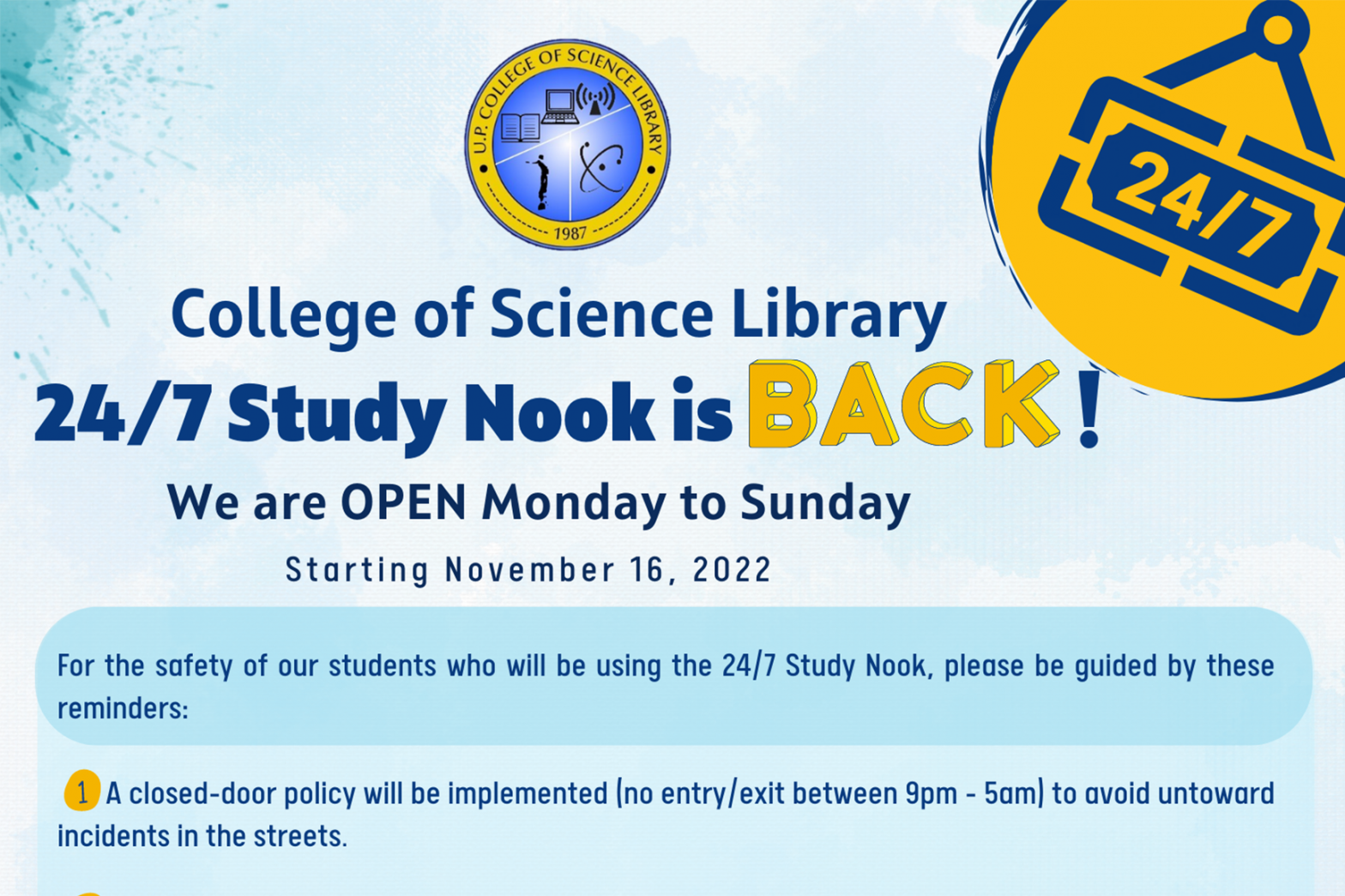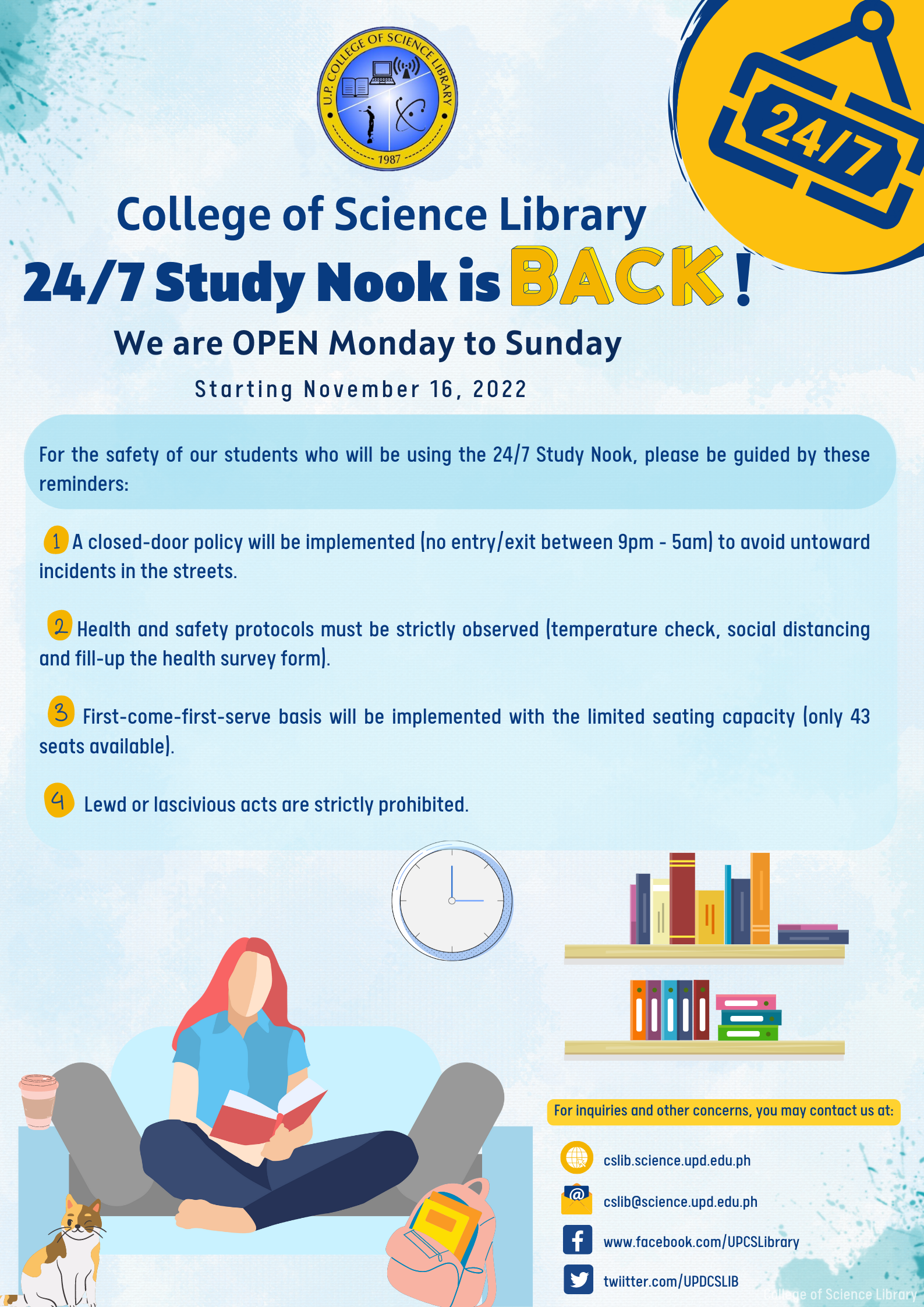Undersea discovery leads to multilingual childrens’ books on Pinoy scientists
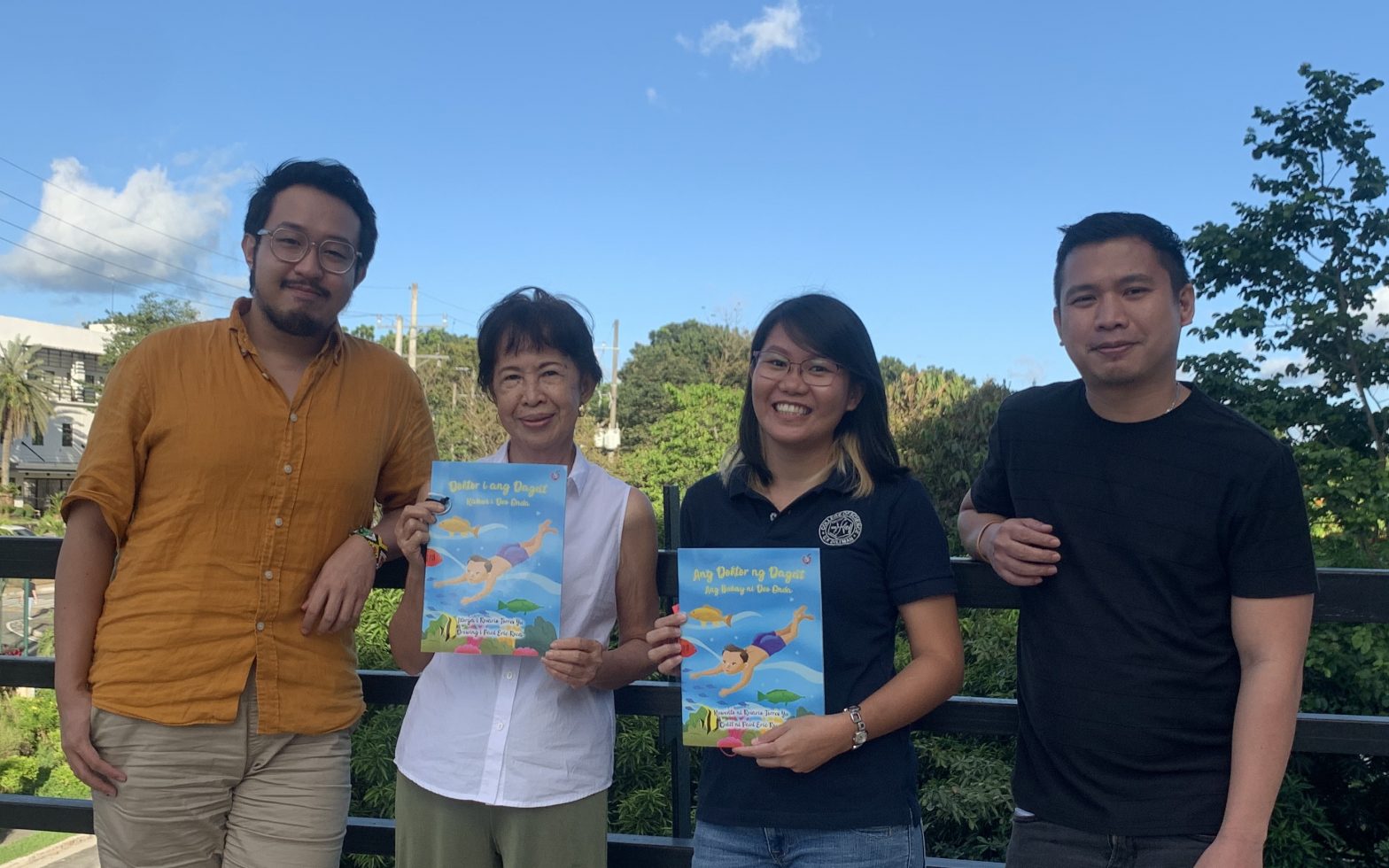
Undersea discovery leads to multilingual childrens’ books on Pinoy scientists
Published: November 21, 2022
By: Timothy James M. Dimacali
A children’s storybook about a pioneering Filipino scientist who made a surprising discovery in one of the deepest parts of the world’s oceans has led to a collaboration between the University of the Philippines – Diliman’s College of Science (UPD-CS) and College of Arts and Letters (UPD-CAL) for a series of inspiring multilingual children’s books on the lives of Filipino researchers.
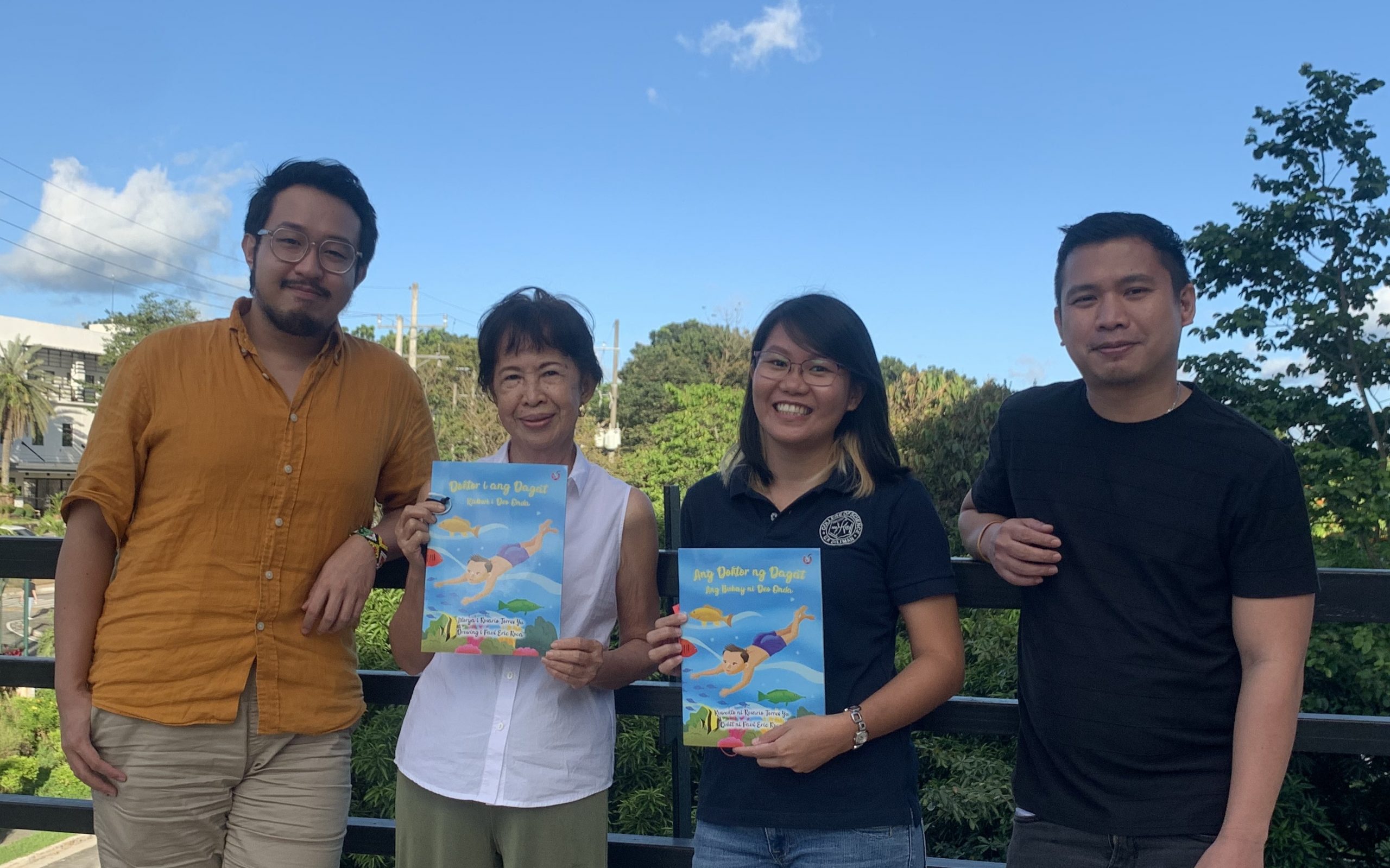
The Sulong-Agham Book Series is set to launch in December with the book, “Doktor ng Dagat.” Written by CAL Departamento ng Filipino at Panitikan ng Pilipinas (DFPP) Professor Emeritus Dr. Rosario Torres-Yu and developed for publication by Supling Sining, Inc., the tome touches on the life and work of Dr. Deo Florence Onda of the UPD-CS’ Marine Science Institute (MSI) who was the first Filipino and one of the first humans ever to explore Emden Deep in the Philippine Trench.
The third deepest place on Earth, Emden Deep is one of the world’s most inaccessible regions even though it is just barely 100 kilometers away from Eastern Samar. And yet, despite its depth and isolation, it was not untouched by humans. You will have to read the storybook to find out what Dr. Onda saw in the depths of the ocean, but it was enough to prompt him to dedicate his life to helping raise public awareness about maintaining the health of our rich marine resources.
Dr. Onda’s life story comes to life in the expert hands of Dr. Torres-Yu, a renowned storyteller and beloved mentor, with illustrations by Paul Eric Roca. Aside from winning and, later, being a judge of the prestigious Palanca Memorial Awards for Literature, Dr. Torres-Yu is also the former dean of CAL and former director of the Sentro ng Wikang Filipino. Meanwhile, Roca is a painter, illustrator, and internationally-published editorial cartoonist.
“Doktor ng Dagat” is written in Filipino with translations in Dr. Onda’s native Cuyonon as well as in English. It is the pilot volume of the Sulong-Agham Book Series, done in partnership between UPD-CS and UPD-CAL, which aims to inspire Filipino children to pursue science, technology, engineering, and mathematics (STEM) by showcasing the lives and work of Filipino scientists. Other books in the series will also be published in Filipino and other Philippine languages, with English translations.
“We hope that this series of stories, beginning with Dr. Onda’s, will help bring about a new generation of scientists and a more science-minded public,” Dr. Torres-Yu said.
“This pioneering project between CS and CAL underscores the importance of collaboration between the arts and sciences and invites young readers to experience the wonders of science,” noted UPD-CS Dean Giovanni Tapang.
“Doktor ng Dagat” and the Sulong-Agham Book Series will be formally launched on December 12, 2022 at 4:00pm in the lobby of the CS Administration Building in UP Diliman. Supling Sining is open to sponsors who are interested in gifting the book to underserved communities, at just ₱100 a copy.
To purchase copies of “Doktor ng Dagat” or to inquire about sponsorships, please contact China Pearl de Vera at chinapearldevera@gmail.com. For interviews and other media requests, please contact media@science.upd.edu.ph.

UPD-CS pays tribute to Former Chancellor Claro Llaguno

UPD-CS pays tribute to Former Chancellor Claro Llaguno
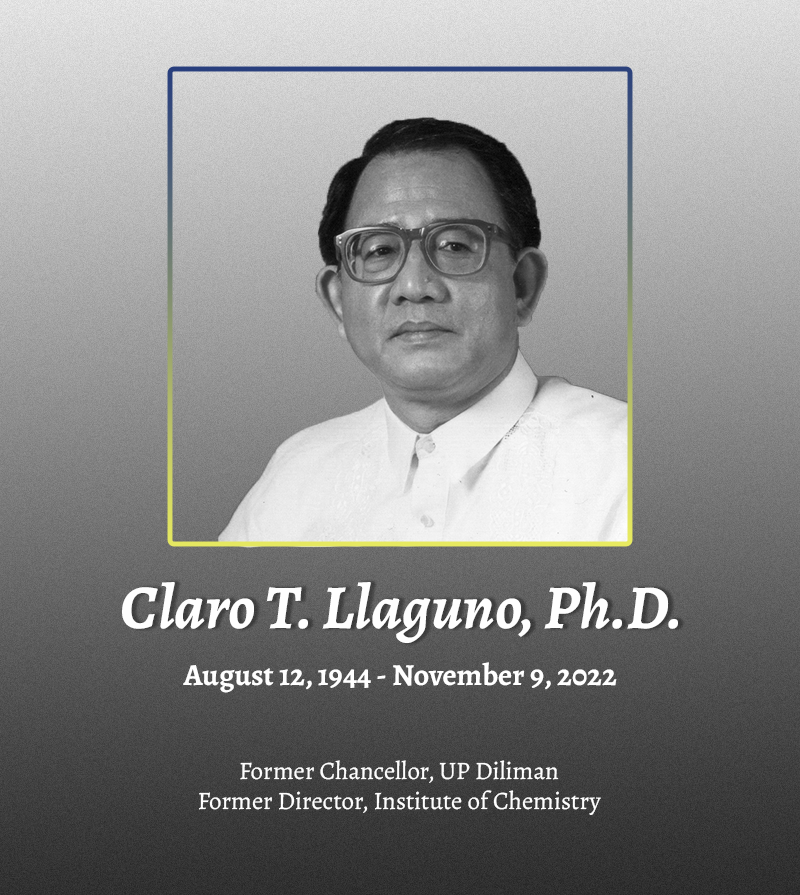 The UP Diliman College of Science joins the scientific community in mourning the passing of former UP Diliman Chancellor and former Director of the Institute of Chemistry Dr. Claro T. Llaguno, PhD.
The UP Diliman College of Science joins the scientific community in mourning the passing of former UP Diliman Chancellor and former Director of the Institute of Chemistry Dr. Claro T. Llaguno, PhD.
Dr. Llaguno was one of the country’s foremost experts in Quantum Chemistry. He graduated with a bachelor’s degree in Chemistry from the Ateneo de Manila University in 1966 and obtained his doctoral degree from the University of Illinois, Urbana-Champaign in 1971. He then undertook post-doctoral studies at Brock University in Ontario in 1972. He was recognized as an honorary alumnus of UP by the UP College of Arts and Sciences Alumni Foundation (UP CASAF) in 1997.
Dr. Llaguno began his career at UPD-CS as an Associate Professor at the Department of Chemistry (now Institute of Chemistry) in 1977. He was the Assistant Dean for Academic Affairs of the College from 1984 to 1986, and was Chairman of the Department of Chemistry from 1986 to 1988 before he became the newly-formed Institute’s Director from 1988 to 1990. He was also a UPD Safety and Security Commission member from 1989 to 1993.
He was appointed UPD Vice Chancellor for Community Affairs in 1993 and served as Secretary of the University and the Board of Regents from 1995 to 1999.
Dr. Llaguno served as UPD Chancellor from 1996 to 1999. During his term, he implemented the Student Evaluation of Teachers (SET), the basic instrument used for evaluating the quality of instruction in the University still in use today. He also initiated the creation of the Office of the Vice-Chancellor for Research and Development (OVCRD) and the establishment of the College of Music’s Center for Ethnomusicology.
After stepping down from the Chancellorship, Dr. Llaguno served as Professor 12 at the Institute of Chemistry until his retirement in 2013.
Dr. Llaguno’s remains lie in state at the Agoncillo Room of La Funeraria Paz at Manila Memorial Park in Sucat, Parañaque. Interment will be on Sunday, November 13, at 3:00 PM, preceded by a mass in the Agoncillo room at 1:00 PM.
Science and the supernatural: Filipino folklore through a scientific lens
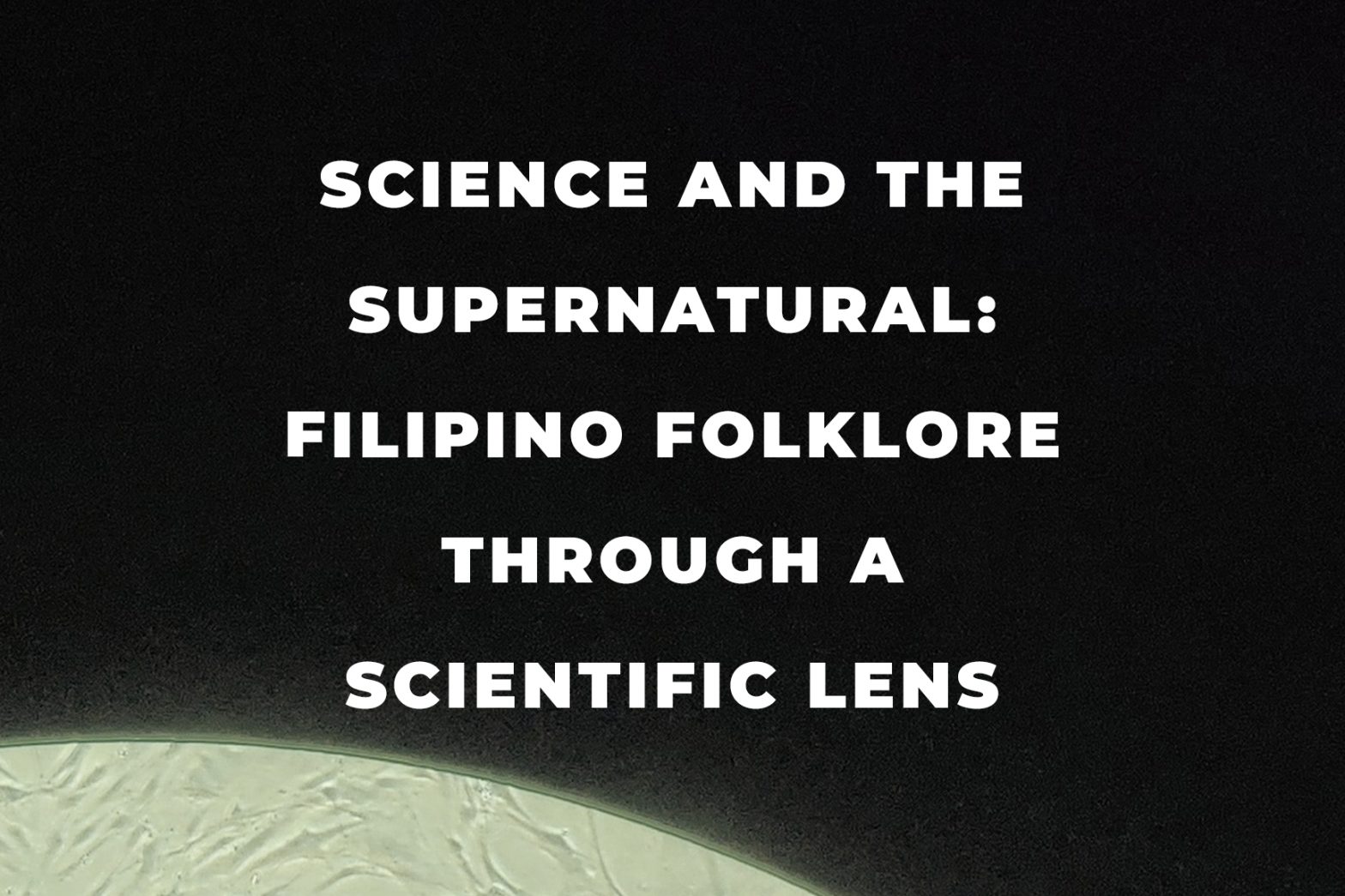
Science and the supernatural: Filipino folklore through a scientific lens
Published: October 28, 2022
By: Eunice Jean C. Patron
Even with the rise of science and technology, Filipino folklore is still passed on from generation to generation – including stories of creatures and curses that heretofore have seemed scientifically unanswerable.
Filipino folklore is an interesting topic to delve into for scientists as the Philippines’ library of research on such supernatural phenomena continues to grow. Discoveries in science and technology have helped shed light on some folklore beliefs that generations of Filipinos grew up believing in. Scientists and researchers from the University of the Philippines – Diliman College of Science (UPD-CS), as well as from other institutes, have researches that focus on health conditions linked to Filipino folklore, enriching our understanding of what we heretofore could only think of as supernatural.
Tracing the Aswang’s true roots
One of the most feared Filipino supernatural beings is the aswang, a shapeshifter that takes on human form during the day but transforms into a grotesque creature at night that would feast on humans. Aswangs are said to live mainly on Panay Island, particularly in the province of Capiz. But in 1975, Filipino doctors discovered a neurodegenerative disorder there called X-linked Dystonia Parkinsonism (XDP).
People diagnosed with XDP exhibit symptoms of dystonia, such as cramping of the foot and involuntary pulling of the neck. The jerky, seemingly unnatural movement of XDP sufferers could easily lead one to think that they are being possessed by the devil. Then it progresses to Parkinsonism symptoms such as tremors, muscle stiffness, slow movement, and impaired balance and coordination which could sometimes lead to falls.
“The [aswang] myth tried to explain the transformation when these people eventually started to manifest the trait,” said National Institute of Molecular Biology and Biotechnology (NIMBB) Director Dr. Pia Bagamasbad, who recently published a study on how stress hormones affect the expression of genes of XDP patients. “They [XDP patients] were born normal, they grew up to be normal, then they suddenly transformed, exhibiting these involuntary contractions na parang nagtatransform. Ganoon ‘yung sinasabi na ‘aswang’. Kaya nagkaroon ng myth.”
Dr. Bagamasbad visited Capiz in 2019 for a completely different reason, but talking to the citizens piqued her interest in probing the link between stress and XDP. “‘Yung iba sinasabi na after a very stressful situation, like [typhoon] Yolanda, doon nagsimulang magmanifest ‘yung symptoms,” Dr. Bagamasbad narrated her experience.
XDP is due to a mutation in a gene found on the X-chromosome. Therefore, this disease more commonly affects males. All individuals afflicted by XDP can trace their roots to Panay Island. There is still no cure for XDP yet, but according to a case study on XDP published in the Philippine Medical Association Journal, it is important for this disease to be recognized.
“The patients who suffer from X-linked dystonia-parkinsonism are people who need care and are not supposed to be feared. Perhaps, if the disease becomes common knowledge, the fear will be turned into understanding, the stigma would be abolished, and the patients afflicted with the disease will be given the appropriate management and be given hope,” the study said.
Blindness due to a ‘curse’
Meanwhile, according to ophthalmologist Dr. Ryan Collantes, it is rare for young people to suffer from glaucoma. So he was naturally intrigued when a 16-year-old approached him because of possible glaucoma.
“The patient also offered an interesting history. Both of his siblings were blind in one eye. His father was also blind. In his case, [glaucoma] was a familial disease. I thought that there was a genetic component because there was a strong penetrance of the disease,” said Dr. Collantes in an interview.
Dr. Collantes flew to the patient’s hometown to learn more about the patient’s family history and genetics, only to meet more than 50 family members who had juvenile open-angle glaucoma (JOAG), a rare glaucoma condition.
After collecting blood samples from the family members and analyzing its extracted DNA at the Philippine Genome Center (PGC), Dr. Collantes discovered a new type of mutation that causes glaucoma in affected family members.
His further research on this disease allowed Dr. Collantes to become a research fellow at the Massachusetts Eye and Ear and the Harvard Medical School. He also received the international Dr. David L. Epstein award for clinician-scientists pursuing research on glaucoma.
“These people [with JOAG] think that they’re cursed. But, through this scientific discovery, we proved that they aren’t [cursed]. I want to give patients hope. It means a lot to them that we’re looking into their situation. I want to genuinely look out for them,” Dr. Collantes shared.
The mystery behind kulam
Whenever severe adverse events happen, Filipinos often wonder if it has something to do with ‘kulam’ or sorcery. Usually, ‘kulam’ involves serious ailments that cause pain, and uses ‘kontra-kulam’ remedies as treatment.
However, Department of Anthropology Professor Emeritus and former UPD Chancellor Dr. Michael Tan wrote an essay elaborating on how certain diseases can be thought to be caused by kulam. Neuritis, a condition involving inflammation of nerves, is one such disease. And sicknesses that are visually disfiguring are also commonly assumed to be an aftermath of kulam. Psoriasis is another example, where patches of thick red skin and scaly patches appear on the skin. And these diseases can also overlap with nervous diseases: anxiety can cause people to scratch their skin and experience mild pain that could worsen over time.
Chronic ailments such as ascites, a condition in which fluid builds up in the abdomen, are also commonly associated with kulam. Ascites may be often caused by liver problems, but some people readily believe that a mangkukulam placed foreign objects into the sufferer’s body.
Psychosis or paranoia, a mental health condition that involves irrational suspicions or mistrust of others, is another ailment commonly associated with kulam. Patients with paranoia often believe they are being threatened despite having little or no evidence.
Kulam, according to Dr. Tan, reveals Filipinos’ lack of health literacy and how widespread and dangerous that can be.
Building on the supernatural
And yet, modern science doesn’t always necessarily have to debunk folk beliefs.
In some ways, science can supplement or even enrich our appreciation of folklore by enabling us to understand what makes the seemingly impossible, possible. And it is through this understanding that we are able to make better-informed decisions.
“Words like ‘mutation’ or ‘carrier’ are very common now, and there’s less stigma among the people afflicted with this disease [XDP],” recounted Dr. Bagamasbad as she talked about her research on XDP. “Now, their health-seeking behavior has improved. Some of them even volunteered their post-mortem brain to advance the understanding of what’s happening at the tissue level.”
Through folklore, we are able to glimpse our ancestors’ perspectives on life, which can in turn cultivate our own self-understanding. Folklore also points the way towards the unknown, raising to our awareness the mysteries of our world, thereby setting the stage for our innate scientific curiosity to learn more about and understand them.
Eunice Jean Patron is a graduate of Development Communication from the University of the Philippines Los Baños. She is a Senior Science Communicator at the UP Diliman College of Science.
Ghosts of WW2: Loss of life and genetic variation in Manila due to war

Ghosts of WW2: Loss of life and genetic variation in Manila due to war
Published: October 27, 2022
By: Timothy James M. Dimacali

The iconic Oblation stands at its original location ca. 1945 in front of the war-torn ruins of what is now UP Manila. Over 100,000 civilians are said to have died in Manila towards the end of World War II, out of a population of 1 million people. (Photo credit: j&b photos/flickr.com)
The ravages of World War II — particularly the destruction of Manila in 1945 — continue to haunt the Philippines even almost a century after they happened, as evidenced through the difficulty in the search for native Manileños.
Since 1996, researchers from the University of the Philippines – Diliman College of Science (UPD-CS) Natural Sciences Research Institute’s (NSRI’s) DNA Analysis Laboratory have been surveying the genetic ancestry of Filipinos across the country. More recently, the laboratory’s ambitious Filipino Genomes Research Program (FGRP) has aimed to document and understand the rich diversity of Filipinos’ genetic heritage. The study’s findings, when completed and made available, will have far-reaching implications on many fields, from forensics and medicine to history and anthropology.
But despite the program’s urgency and lofty goals, there is at least one place in the country where genetics and local ancestry have proven to be difficult to document for the most poignant of reasons.
Searching for native Manileños
Partnering and volunteering for the FGRP seems simple enough: to become a representative of a particular Filipino group from a particular Filipino region, you as well as your parents and grandparents on both sides should also be from the same place. Meeting these criteria outside of the National Capital Region (NCR) would be no problem — especially in largely homogeneous ethnic groups, such as those in the Cordilleras and in Mindanao. However, the researchers have found it next to impossible to obtain samples from Metro Manila, despite repeated efforts.
“Nahihirapan talaga kami hanapin silang mga at least third generation na born in Metro Manila, kahit na ikinalat na namin ang aming recruitment sa iba’t-ibang LGUs, universities, at maging sa Facebook at Twitter,” said FGRP researcher Noriel Esteban. “Kaya we are now relaxing our inclusion criteria to at least having both parents born in Metro Manila.” Yet even despite these adjustments to the eligibility criteria, Esteban said that out of over 40 potential partner-volunteers from the NCR, only 17 were able to be accepted into the study.
This present dearth likely hints at an ominous past, according to evolutionary geneticist and FGRP Program Leader Frederick Delfin.
Genetic ghosts of lost people
“Such a massive loss of native populations can be due to a natural event, such as a volcanic eruption, or as is most likely in this case, a man-made event such as war,” Delfin explained.
More than one in ten civilians were killed out of a population of just 1 million people in the Battle of Manila towards the end of the Second World War in 1945, based on historical accounts and census data. This decimated the local population, which never completely recovered and is the likely reason for the near absence of native Manileños today.
“Catastrophic events can severely reduce the population size, with locals either killed or forced to leave. This can result in the reduction of genetic diversity in an area. It takes a very long time for local populations to recover, if at all,” Delfin lamented. “In a way, we can think of the lost genetic variation as the ghosts of the people we lost.”
FGRP seeks partner-volunteers
The FGRP is a comprehensive study that emphasizes the informed consent of its participants, especially indigenous peoples. A similar earlier study, published by the University of Uppsala in 2021, was plagued by ethical issues.
With COVID-19 pandemic restrictions easing up, the FGRP’s nationwide sampling is proceeding at a steady pace as the team is focused on acquiring permission from, as well as explaining the project’s objectives and potential impact to, the country’s various indigenous peoples.
To learn more about the FGRP and to inquire about becoming a partner-volunteer, please contact Frederick Delfin at fcdelfin@up.edu.ph. You may also visit their Facebook page for ongoing and future recruitment postings at https://www.facebook.com/DNAForensicAndEthnicity/.
For other requests and media inquiries, please contact media@science.upd.edu.ph.
UPD-CS faculty work to address PHL’s ‘most disaster-prone country’ status
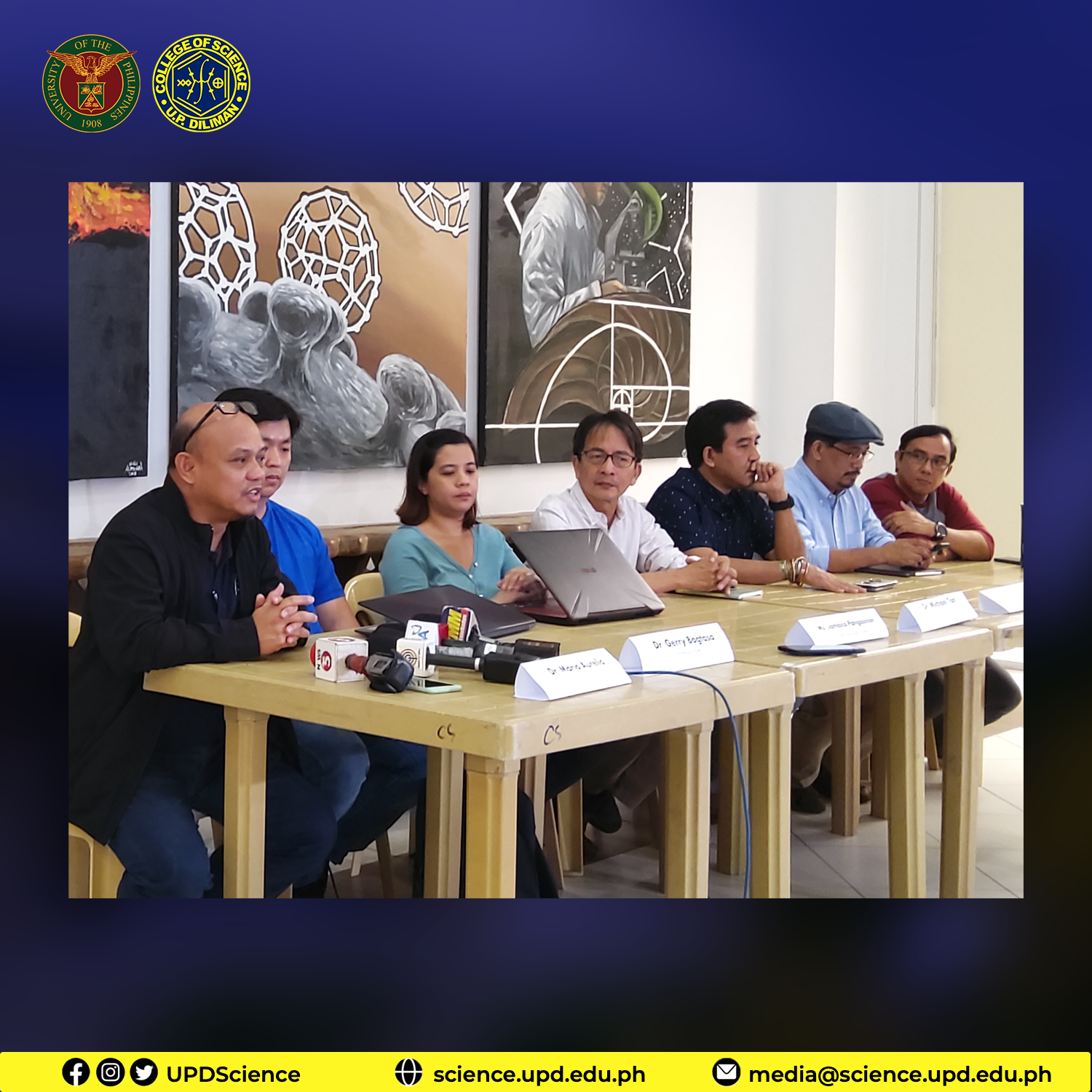
UPD-CS faculty work to address PHL’s ‘most disaster-prone country’ status
Published: October 14, 2022
By: Eunice Jean C. Patron
The Philippines is one of the world’s most disaster-prone countries, according to a recent international study. But a handful of scientists from the University of the Philippines – Diliman College of Science (UPD-CS) hope to change that.
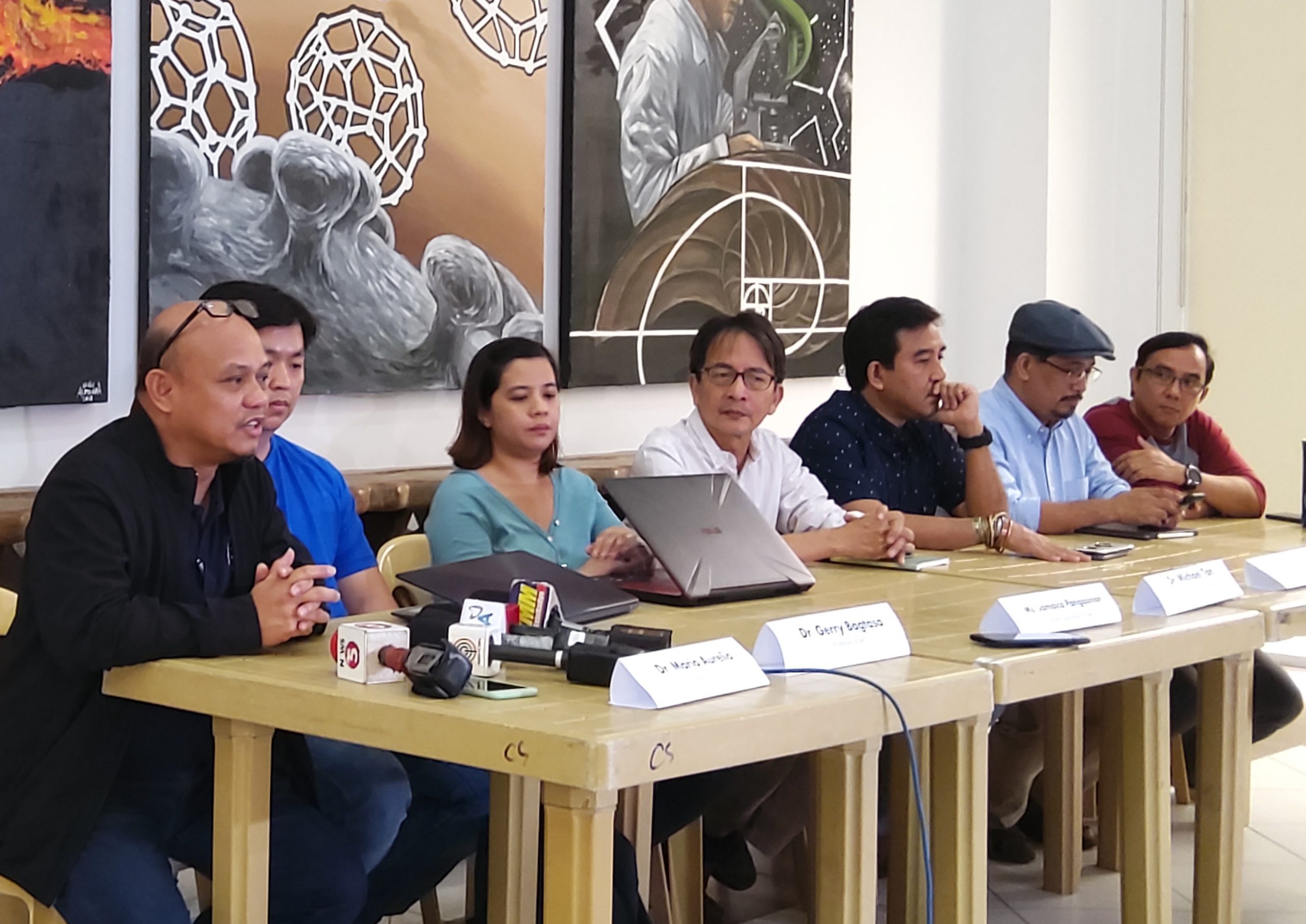
The 2022 World Risk Report warned that, out of 193 countries, the Philippines has the greatest risk, exposure, vulnerability, and susceptibility to disasters, further aggravated by a deep lack of coping and adaptive capacities.
However, timely to the release of the Report, the University of the Philippines recently conferred the UP Centennial Professorial Chair and Faculty Grant on 98 UPD-CS faculty members from the Institute of Environmental Science and Meteorology and the National Institute of Geological Sciences, as well as from the National Institute of Physics, Institute of Biology, Institute of Chemistry, Marine Science Institute, Institute of Mathematics, and National Institute of Molecular Biology and Biotechnology.
The conferment also came just days ahead of the UN-declared International Day for Disaster Risk Reduction last October 13.
“The Centennial Grant is a welcome acknowledgement of, and support for, the hard work that UP’s scientists and researchers put into their respective fields. It helps us to focus on the tasks at hand so that we can bring the science to where it is most needed,” said UPD-CS Dean Giovanni Tapang.
“There are a lot of research studies to understand the physical, social, and economic components of risk. Our main role as scientists is to communicate and disseminate information on hazards and their impacts, hoping these will guide efforts in disaster response,” added Centennial Grant awardee Dr. Noelynna Ramos, a professor of Geomorphology and Geohazards at the National Institute of Geological Sciences and the head researcher of the Geomorphology and Active Tectonics Research Laboratory.
“Much of the research we undertake is very meticulous and painstaking. For outside observers, they may not seem immediately important or even necessary. But patient persistence pays off, because we are eventually able to find underlying patterns that enable us to come up with practical, real-world solutions,” explained Centennial Grantee and atmospheric physics expert Dr. Gerry Bagtasa. “There is much that can and should be done in terms of disaster response in the country, and I’m thankful that UP and the College of Science understand this and enable us to help address these.”
The Centennial Grants are awarded annually to UP faculty members in recognition of their outstanding performance in the areas of teaching; research or creative work; and public service. In their various capacities, the Grantees’ research is helping improve our understanding of the natural world and, more specifically, the nature of natural disasters and how best to respond to them.
For more information and interview requests, please message media@science.upd.edu.ph.
Critically-endangered Irrawaddy dolphin subpopulation exists in San Miguel

Critically-endangered Irrawaddy dolphin subpopulation exists in San Miguel Bay
Published: October 27, 2022
By: Timothy James M. Dimacali
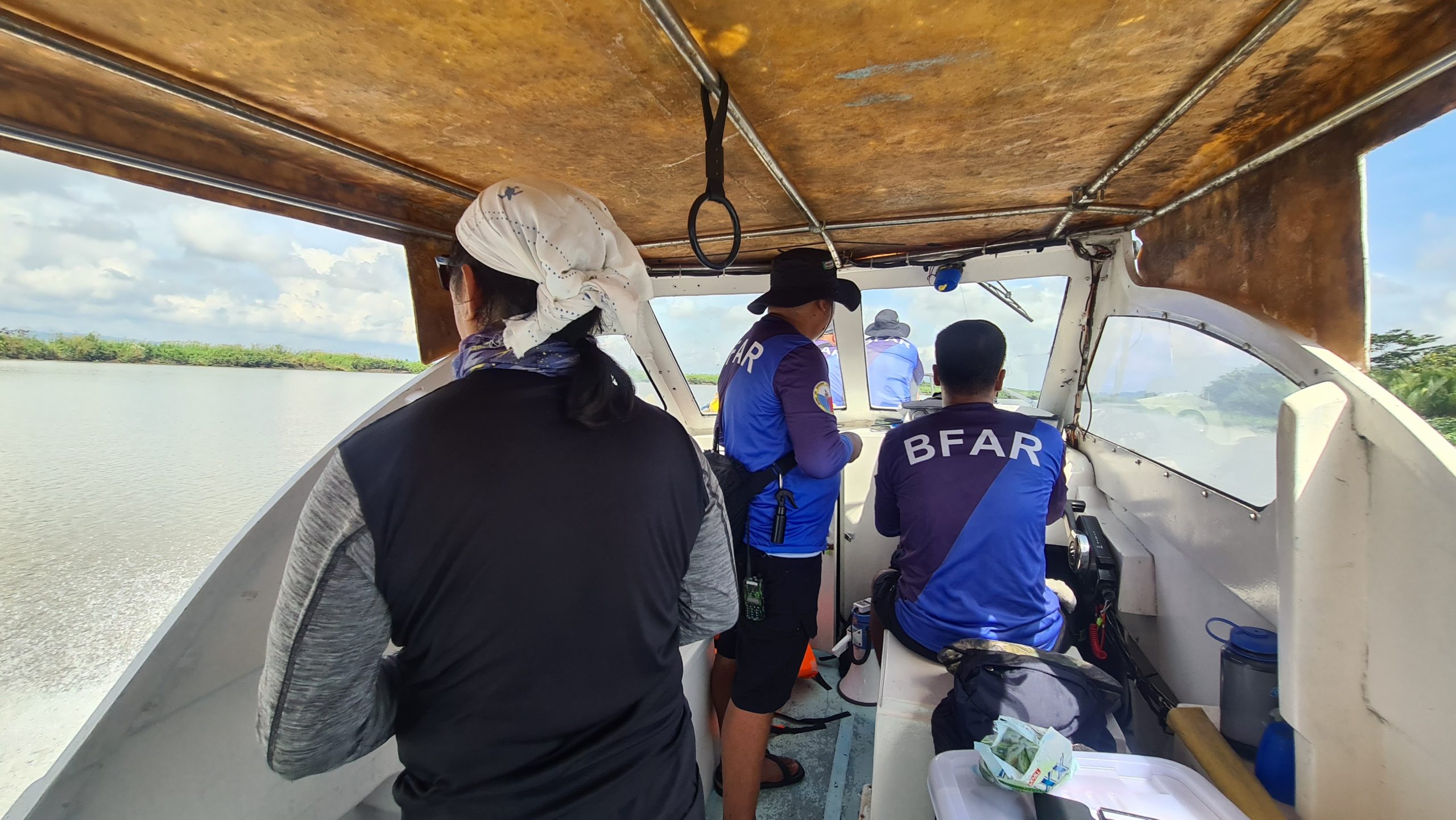 A joint team of researchers from the UPD-CS IESM and BFAR5 conduct a boat survey of the Bicol River as part of a reconnaissance trip in search of the rare and endangered Irrawaddy dolphin. (Photo credit: IESM/BFAR5)
A joint team of researchers from the UPD-CS IESM and BFAR5 conduct a boat survey of the Bicol River as part of a reconnaissance trip in search of the rare and endangered Irrawaddy dolphin. (Photo credit: IESM/BFAR5)
Scientists from the University of the Philippines – Diliman College of Science (UPD-CS) are hot on the trail of a subpopulation of rare and endangered dolphins in the San Miguel Bay area in Bicol. Key Informant Interviews with local fisherfolk indicate that the dolphins may have been thriving there for decades, even while so far eluding capture and official documentation.
Previous sightings of Irrawaddy dolphins
Last August 16, an Irrawaddy dolphin (Orcaella brevirostris) was found accidentally entangled and drowned in a fisherman’s net in San Miguel Bay off Calabanga, Camarines Sur. This was the first time that this species — considered critically endangered by the Philippine Department of Environment and Natural Resources (DENR) — had been found in the Eastern part (Pacific side) of the country.
Apart from other Irrawaddy dolphin populations scattered in South and Southeast Asia, all previous sightings in the Philippines were exclusively in the Western part of the archipelago: in Malampaya Sound, Palawan, and in the Iloilo-Guimaras-Negros Occidental area.
The new discovery prompted Dr. Lemnuel Aragones, a professor at the UPD-CS Institute of Environmental Science and Meteorology (IESM) and president of the Philippine Marine Mammals Stranding Network (PMMSN), to organize a reconnaissance trip in the hopes of finding more of these dolphins in the area.
Careful interviews reveal telltale clues
From October 21 to 24, a joint team of researchers from the IESM and BFAR Regional Office 5 conducted opportunistic boat surveys and key informant interviews with local fisherfolk in areas surrounding the location of the initial Irrawaddy dolphin sighting and beyond (see map below).
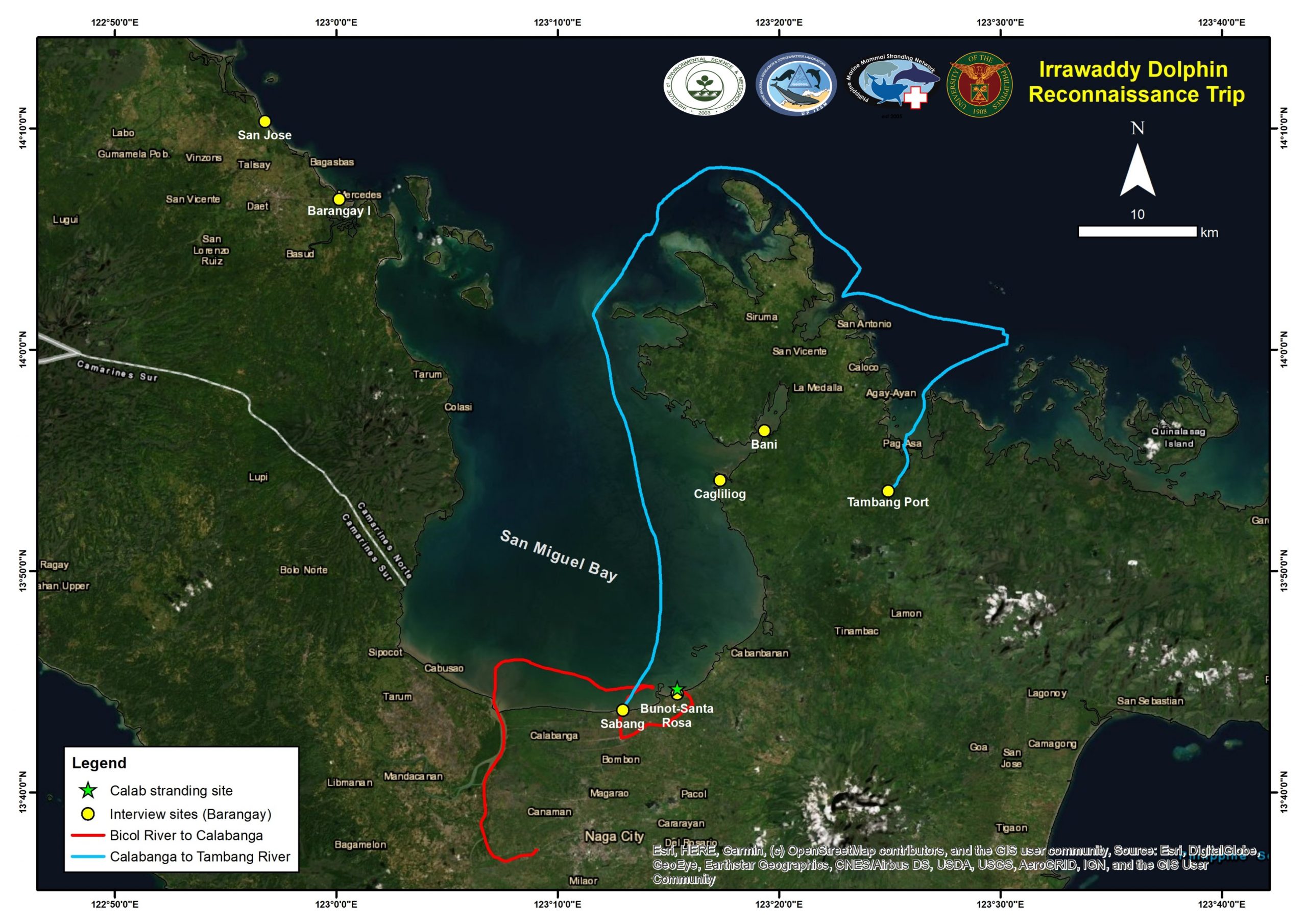 From October 21 to 24, 2022, a joint reconnaissance team from the UPD-CS IESM and BFAR5 traversed the Bicol River from Camaligan to its mouth, which splits into Cabusao and Calabanga. The Tambang River was also surveyed by navigating through San Miguel Bay north of Calabanga, then eastward towards Tinambac, passing through Siruma, Camarines Sur, by boat. The team also made land trips to the areas of Mercedes and Vinzon’s-Talisay in Camarines Norte. (Photo credit: IESM)
From October 21 to 24, 2022, a joint reconnaissance team from the UPD-CS IESM and BFAR5 traversed the Bicol River from Camaligan to its mouth, which splits into Cabusao and Calabanga. The Tambang River was also surveyed by navigating through San Miguel Bay north of Calabanga, then eastward towards Tinambac, passing through Siruma, Camarines Sur, by boat. The team also made land trips to the areas of Mercedes and Vinzon’s-Talisay in Camarines Norte. (Photo credit: IESM)
The team carefully crafted open-ended questions for the interviewees, allowing the latter to describe the features of the dolphins that they saw, or still see, in their areas. The responses helped the researchers validate the species of the creatures in these sightings. Some of the informants noted telltale features that point to these being Irrawaddy dolphins — such as their small size (2-2.5 meters long); the absence of a beak; and a small rounded dorsal fin. Afterwards, the interviewees were shown pictures of Irrawaddy dolphins so they could confirm the actual appearance of the creatures they had seen. As an added step, the researchers also prudently documented the interviewees’ fishing grounds, gear, and catch.
A thriving subpopulation
Based on some local key informants’ long-term recollections, it seems that a subpopulation of Irrawaddy dolphins may be thriving in San Miguel Bay and seasonally visiting specific areas for several decades now.
“Some preliminary but important information derived from this recon trip includes the possible seasonal movement of the dolphins in response to prey abundance, and some localities have confirmed sighting these animals in their areas,” Aragones said.
“Our key informant interviewees provided preliminary information which showed that these animals may have been in the area since the 1960s, and are usually sighted in small groups of three to seven individuals. There’s even an exceptional sighting in 2021 of a group of over ten dolphins by a key informant from Tinambac, Camarines Sur,” he added.
Also, Aragones said that “the locals just referred to them as dolphins, and this might have been the reason why they all along thought that they were just the usual ordinary ones often sighted offshore.”
 Researchers from the UPD-CS IESM and BFAR5 listen to one of their key informant interviewees describe his sighting of what experts believe to be rare and endangered Irrawaddy dolphins. (Photo credit: IESM/BFAR5)
Researchers from the UPD-CS IESM and BFAR5 listen to one of their key informant interviewees describe his sighting of what experts believe to be rare and endangered Irrawaddy dolphins. (Photo credit: IESM/BFAR5)
Moreover, careful measurements of the temperature, salinity, and depth of the waters surrounding Tinambac point to an environment that is conducive to attracting Irrawaddy dolphins.
“The combination of the shallow depth of the Bay; nearby islands; isolated embayment; the wide range of available possible prey items such as small fish and crustaceans; and the wide range of salinities in San Miguel Bay, are some of the features that enable the Irrawaddy dolphins to thrive in this area,” Aragones explained.
The reconnaissance trip was part of the IESM’s Assessment and Mobilization of Research Initiatives on Philippine Marine Mammals (PHLMarMams) Project funded by the Department of Science and Technology – Philippine Council for Agriculture, Aquatic and Natural Resources Research and Development (DOST-PCAARRD).
A full-blown survey to possibly quantify the relative abundance and range of distribution of Irrawaddy dolphins in San Miguel Bay and adjacent areas is scheduled for early 2023.
For interviews and further information, you may contact IESM Professor and PMMSN President Dr. Lemnuel Aragones via mobile no. (0928)5018226 or email laragones@iesm.upd.edu.ph; and BFAR5 Fisheries Resource Management Section Chief Nonie Enolva at mobile no. (0915)9316884.
For other inquiries, please contact media@science.upd.edu.ph.
‘A Woman’s Place is Everywhere’ STS Month honors UPD-CS’ TOWNS winners

‘A Woman’s Place is Everywhere’
STS Month honors UPD-CS’ TOWNS winners
Published: October 20, 2022
By: Marie Asheideen M. Masayon
The Outstanding Women in the Nation’s Service (TOWNS) 2022 winners from The University of the Philippines – Diliman College of Science (UPD-CS) took center stage at the university’s annual celebration of Science, Technology, and Society (STS) Month in a free online forum entitled, “A Woman’s Place is Everywhere.”
A link to the full recording of the event can be found at the end of this release.
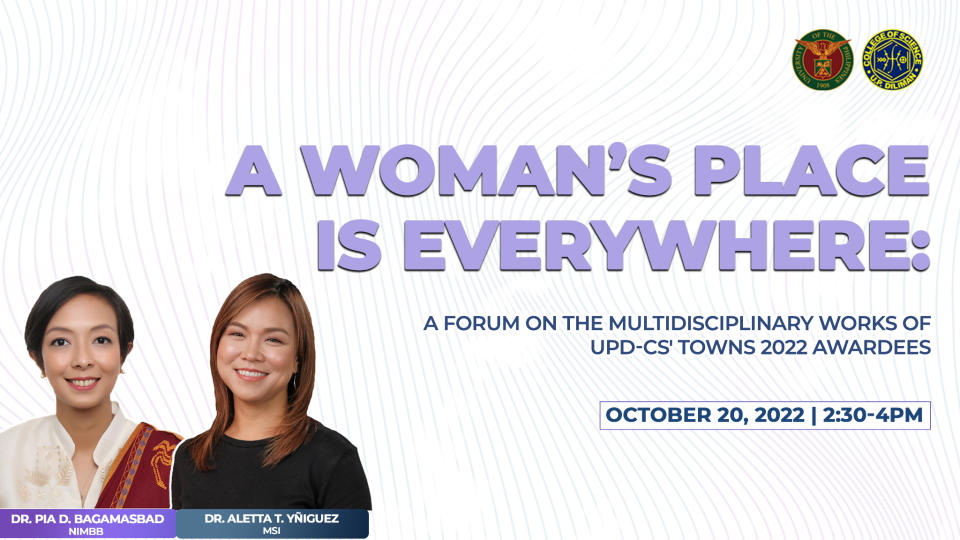
As Director of the National Institute of Molecular Biology and Biotechnology (NIMBB), Dr. Pia D. Bagamasbad has been a key player in the country’s pandemic response, while the Marine Science Institute’s (MSI’s) Dr. Aletta T. Yñiguez has continually been helping to improve the lives of fisherfolk and uplift the country’s fisheries sector through her work in marine biology.
Together, Dr. Bagamasbad and Dr. Yñiguez highlight the wide range of impactful and far-reaching contributions of women in all fields of science.
Dr. Bagamasbad shared her personal experiences as one of the early frontliners in the COVID-19 crisis, where her team rose to the challenge of providing testing facilities and training at a time when much was still unknown about the virus. “It fills my heart to know that we helped make medical testing accessible,” she recalled.
Dr. Yñiguez touched on her immersion in the country’s vast coastal ecosystems and the communities that live there, recalling how science is helping both improve our understanding of nature and alerting us to the dangers that threaten it—even while also providing the means for its protection. “We’re blessed with so many rich coastal habitats, but they’re threatened by local and global challenges,” she said.
Since 2018, the University of the Philippines has been celebrating STS Month every October in an effort to raise public appreciation of the interstices of science, technology, and society.
The full recording of the Forum can be found here: https://drive.google.com/drive/folders/11CwSOQnzjmJA8xSTouFUF1a58_7zmNyh
How to prepare for F2F classes, according to UP Scientists and admin experts

How to prepare for F2F classes, according to UP scientists and admin experts
Published: October 20, 2022
By: Eunice Jean C. Patron
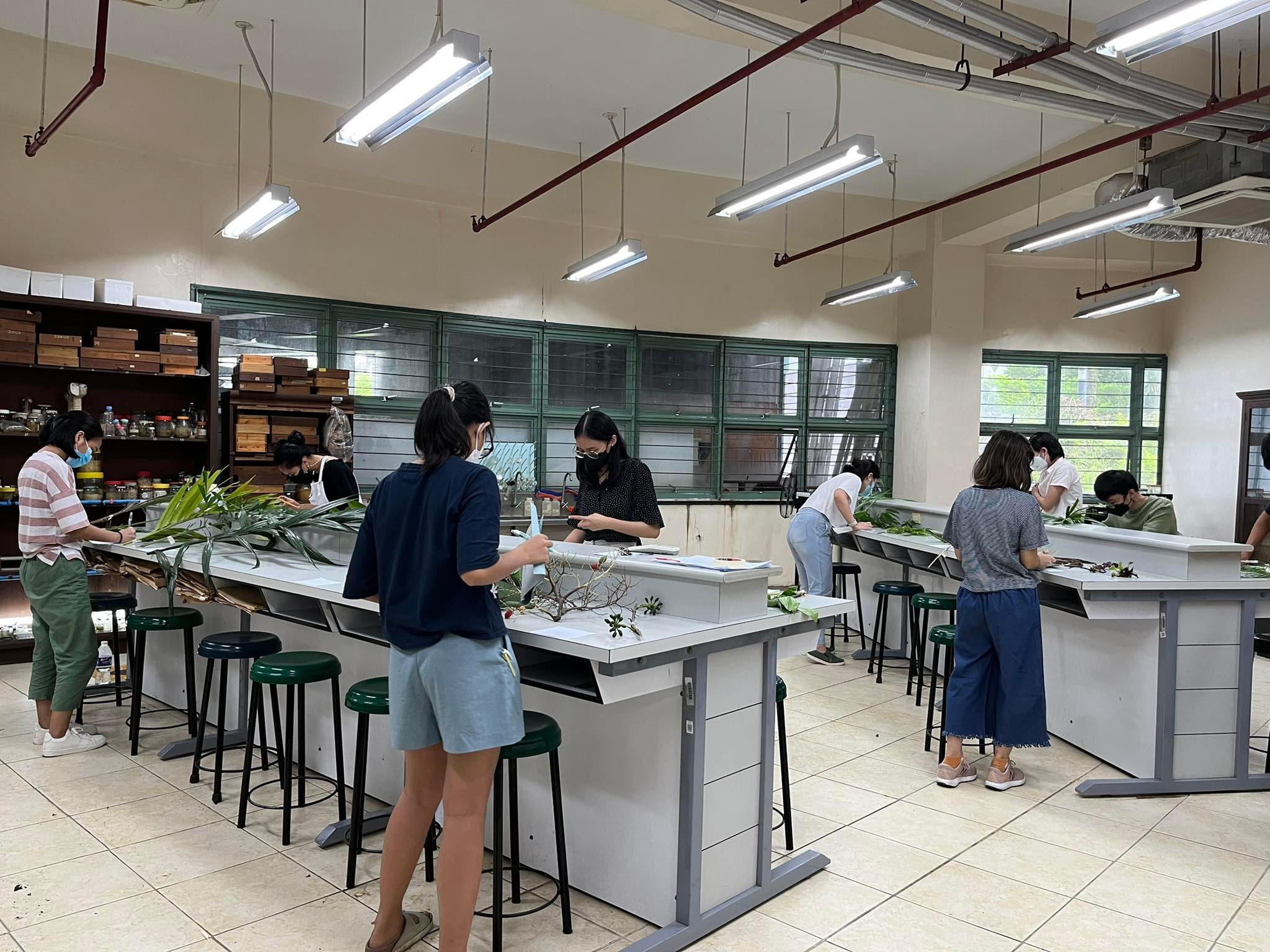 SAFETY FIRST. Biology students undertake a “move-type” laboratory exam in the Institute of Biology under strict safety guidelines and protocols. (Photo: Dr. Lillian Jennifer Rodriguez, UPD College of Science)
SAFETY FIRST. Biology students undertake a “move-type” laboratory exam in the Institute of Biology under strict safety guidelines and protocols. (Photo: Dr. Lillian Jennifer Rodriguez, UPD College of Science)
Experts from the University of the Philippines – Diliman are in agreement that precautionary and safety measures are still necessary in the wake of the COVID-19 pandemic, even though improved vaccination numbers across the country have warranted an overall easing of restrictions.
The experts also stressed the need for a carefully planned, calculated, and gradual return to face-to-face (F2F) classes to allow universities and schools enough time to adapt their facilities to accommodate hybrid learning.
These were some of the key takeaways from “Pagbabalik sa Unibersidad: Mga Aral Batay sa Paghahanda at Karanasan,” a gathering of some of UP Diliman’s health experts and veteran administrators to tackle best practices for a safe and healthy transition back to F2F.
Organized by the University of the Philippines – Diliman College of Science (UPD-CS), the discussion was held simultaneously online and in person last October 17. The panel of experts represented a variety of disciplines and perspectives, with College of Mass Communication (CMC) Dean Dr. Fernando Paragas; College of Law (UP Law) Dean Carlo Vistan; CS Associate Dean for Mentoring, Academic Progress, and Advancement Dr. Eizadora Yu; Philippine Genome Center (PGC) Laboratory Manager and Clinical Health Officer Dr. Marc Edsel Ayes; Institute of Biology (IB) Biosafety Officer Dr. Ivan Imperial; and National Institute of Molecular Biology and Biotechnology (NIMBB) Deputy Director for Academic Affairs Dr. Ron Leonard Dy.
‘Hyflex’ classrooms and workspaces
The “hyflex”— or ‘hybrid-flexible” — event was not just a public forum but also a proof-of-concept showcasing the possibilities and benefits of such spaces for work and learning, moving forward.
“It’s not easy shifting, especially if we’re trying to explore new modes of work and study,” said UPD-CS Dean Giovanni Tapang as he opened the discussion. “But today isn’t just about exploration, it’s about sharing and facing the problems of COVID head-on in terms of addressing the pandemic as well as continuing to pursue teaching and learning.”
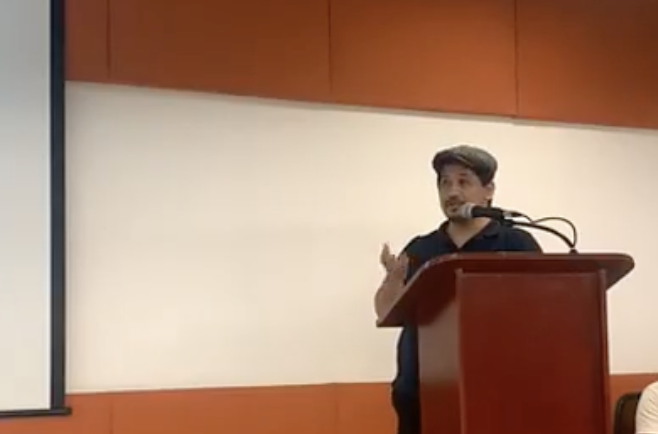
“Newer virus variants are more infectious than those before them, but vaccines have blunted the rise of cases and prevented outbreaks from overwhelming our hospitals,” explained Dr. Ayes, a pandemic expert. However, he also warned against complacency: “Regardless of vaccine status, people can still get the virus but unvaccinated people are at the highest risk of severe complications.”
Dr. Yu agreed, underscoring the need for a “phased return” to F2F to enable institutions to design and implement safety measures, such as customized safety guidelines; improved ventilation and socially-distanced seating in classrooms; and easier and more stable online access for everyone.
“We recognize the flexibility afforded by blended learning to both students and faculty. CS needs to have a balanced approach to quality instruction, health risk assessment, response, and beyond,” Dr. Yu shared.
Hybrid work and study spaces are an immediate need
The experts raised the pressing need to accommodate hybrid online learning by creating bigger and more open spaces to allow social distancing, accompanied by stable internet connectivity and proper ventilation. Institutes under the CS, for example, retrofitted their laboratories to ensure safety while conducting F2F classes. “Science is experiential. We cannot wait until the pandemic is over or when COVID is declared endemic. Guidelines may change but some things remain,” said Dr. Yu.
Even UP Law resorted to bringing its library tables out into hallways and corridors to allow for proper distancing and ventilation. Dean Vistan recommended having more classrooms and areas where students can stay under safely distanced and well-ventilated conditions: “The ideal model for us is to have each class have its own classroom. Kasi even if we maximize our spacing, hindi pa rin kasya,” he said.
Importance of social media and direct communication
Dean Paragas also stressed the importance of always having a direct line with students. He shared how the CMC implemented its own back-to-school program, in which the College enhanced its visibility and ties to its constituents by having the dean himself manage the institution’s social media account. “Tuluy-tuloy pa rin [PR campaign] sa aming Facebook page. Alam nila na nandoon ako. Mahalaga na the students know I’m always there,” Dean Paragas said.
“Have a platform to be able to broadcast announcements really fast, so that when cases happen you have a way to mobilize and adapt,” added Dr. Dy. He presented a primer on F2F guidelines that students can use during their stay at the university and also recommended looping in student leaders to help disseminate information faster.
According to the speakers, the faculty, staff, and other community leaders should set an example to other UPD constituents by conducting regular F2F meetings while still following proper safety protocols. “Mahalagang makita ng faculty and students na nandoon kami sa building,” Dean Paragas further stated.
Crisis management teams
The gathered experts also underscored the need to establish clear protocols for handling suspected and confirmed COVID-19 cases, and delegating teams specifically tasked with handling various aspects of safety.
“Every unit should have a proper crisis management team. There should be a COVID reporting system because voluntary reporting is crucial for ensuring safety in face-to-face activities and having a stock of rapid antigen test kits,” Dr. Dy said. Meanwhile, Dr. Imperial emphasized the importance of having antigen tests on hand, saying that “it is really helpful, even if it’s not the gold standard.” He also added that voluntary reporting of possible COVID-19 cases is essential. “We always emphasize that if you’re already symptomatic, stay at home,” he said.
UPD-CS Post-ECQ Team (PET) Chair Dr. Rene Rollon closed the forum by reiterating the critical role that PETs had in ensuring a well-planned shift to F2F learning.
UP Diliman bounces back from COVID-19
At the onset of the COVID-19 pandemic in early 2020, UP’s Diliman campus alone had 23,360 students attending regular F2F classes. The university administration quickly suspended work and classes on March 9, 2020, and things have never been the same since. The university’s faculty and staff had to immediately work remotely, juggling the challenges of new technologies and family obligations. Even now, there are still thousands of students who do not have access to computers and stable internet connection. After almost two years of a fully online learning setup, UP Diliman eased back into limited F2F classes this year, only accommodating some 400 students out of over 25,000 students in January 2022. For the current academic year, the university implemented blended learning after seeing the COVID-19 situation in the Philippines improve.
For more information and interview requests, please message media@science.upd.edu.ph.
Pinay pioneers in biomedical and marine research win TOWNS 2022 Award
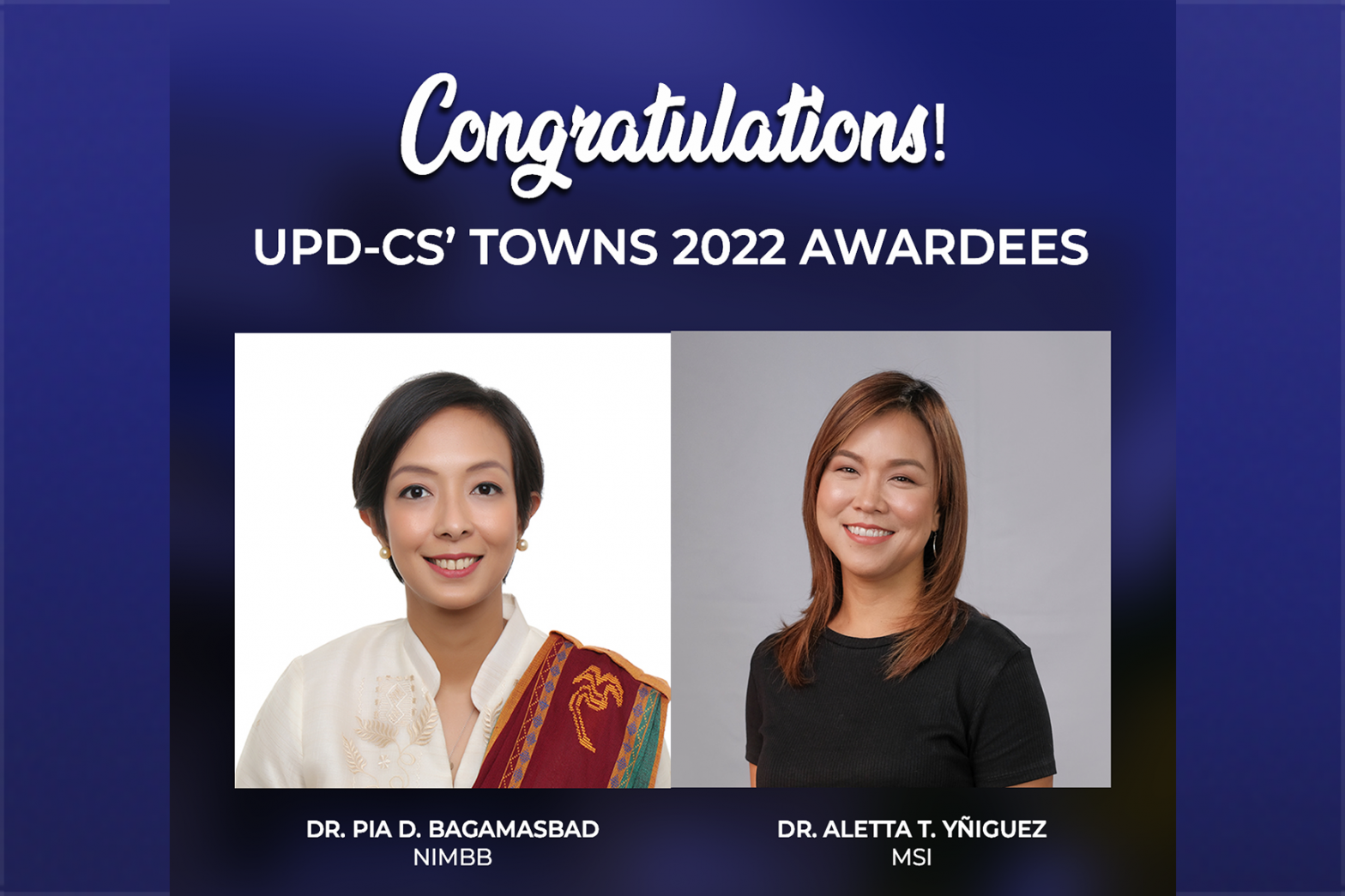
Pinay pioneers in biomedical and marine research win TOWNS 2022 Award
Published: October 5, 2022
By: Timothy James M. Dimacali
From the front lines of the COVID-19 pandemic to the forefront of ocean research, Filipina scientists from the University of the Philippines – Diliman College of Science (UPD-CS) are leading the country and the world in life sciences.

Two of the 11 winners of The Outstanding Women in the Nation’s Service (TOWNS) 2022 are both experts in life sciences from the UPD-CS. As Director of the National Institute of Molecular Biology and Biotechnology (NIMBB), Dr. Pia D. Bagamasbad has been a key player in the country’s pandemic response, while the Marine Science Institute’s (MSI’s) Dr. Aletta T. Yñiguez has continually been helping to improve the lives of fisherfolk and uplift the country’s fisheries sector through her work in marine ecology.
Spearheading Philippine COVID-19 response
With her years of extensive experience in using RT-PCR for various biomedical applications and assays, Dr. Bagamasbad quickly rose to prominence during the COVID-19 pandemic. Early on, she was able to train over a hundred medical technologists from dozens of testing laboratories and hospitals across the country in the use of RT-PCR testing. She is also deeply involved in research towards better understanding the molecular basis of hormone action and hormone-dependent cancers. As a researcher, she continually advocates government support for STEM practitioners, especially women scientists.
“My vision is for our country to get to a point where we have eliminated most, if not all, barriers to scientific progress, and prioritized the development of STEM professionals to give them enough motivation to stay,” Dr. Bagamasbad says.
ARAICoBeH, HABHub help empower fisherfolk
Meanwhile, Dr. Yñiguez is a well-known advocate of sustainable fishing practices and a staunch defender of marine ecology and biodiversity. Her marine research is focused on developing technologies and practices that can help oversee and protect coastal ecosystems, including an early-warning system for harmful algal blooms called HABHub. She and her team also developed a coastal monitoring system, officially called “A Rapid Assessment Instrument for Coastal Benthic Habitats”—but affectionately referred to by its tongue-in-cheek acronym, ARAICoBeH—that provides a low-cost way to take underwater photos of endangered areas such as coral reefs. Ultimately, Dr. Yñiguez is working towards forging close partnerships between coastal communities and public and private entities so that the science can be mainstreamed.
“It’s understandable that we want to have more and better production for a growing population and for economic growth, but the science and technologies to ensure sustainability and thus the health of the ecosystems for marine resources should also go hand-in-hand with these,” Dr. Yñiguez explains.
Inspiring future Filipina scientists
As professors at the UP Diliman College of Science, Drs. Bagamasbad and Yñiguez both continually inspire young students to become the country’s next generation of scientists. Their TOWNS win is a testament to the country and to the world of what Filipinas can aspire to and achieve.
Since 1974, the TOWNS Awards have been bestowed on outstanding Filipino women between the ages 21 to 50 years old who have contributed invaluably to the country’s economic, social, and cultural development, as well as to national security and unity. The Awards are given every three years by the TOWNS Foundation, a non-profit organization whose members are committed to using their experience, skills, and resources to improve quality of life and to serve as catalysts for national development.
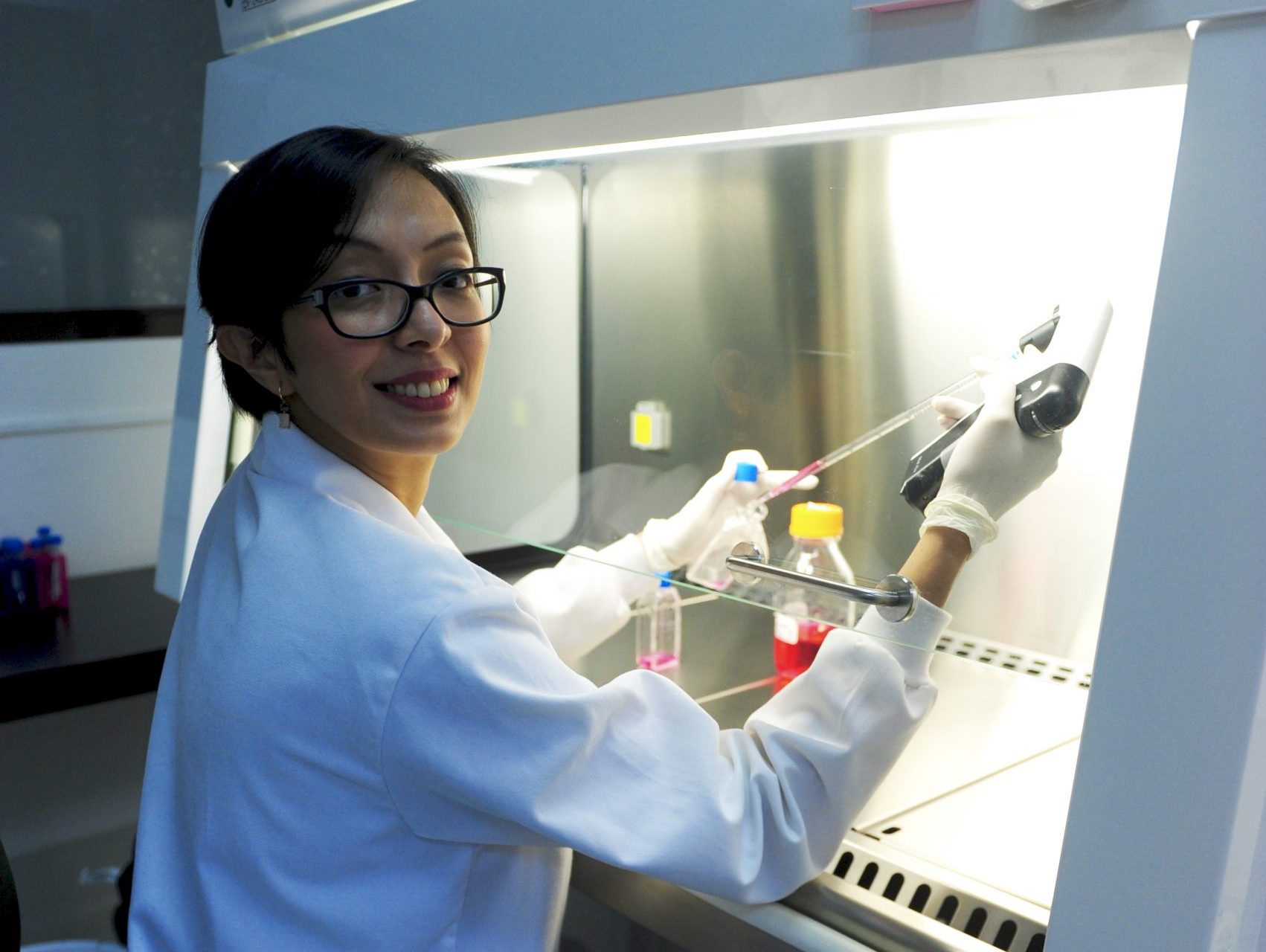
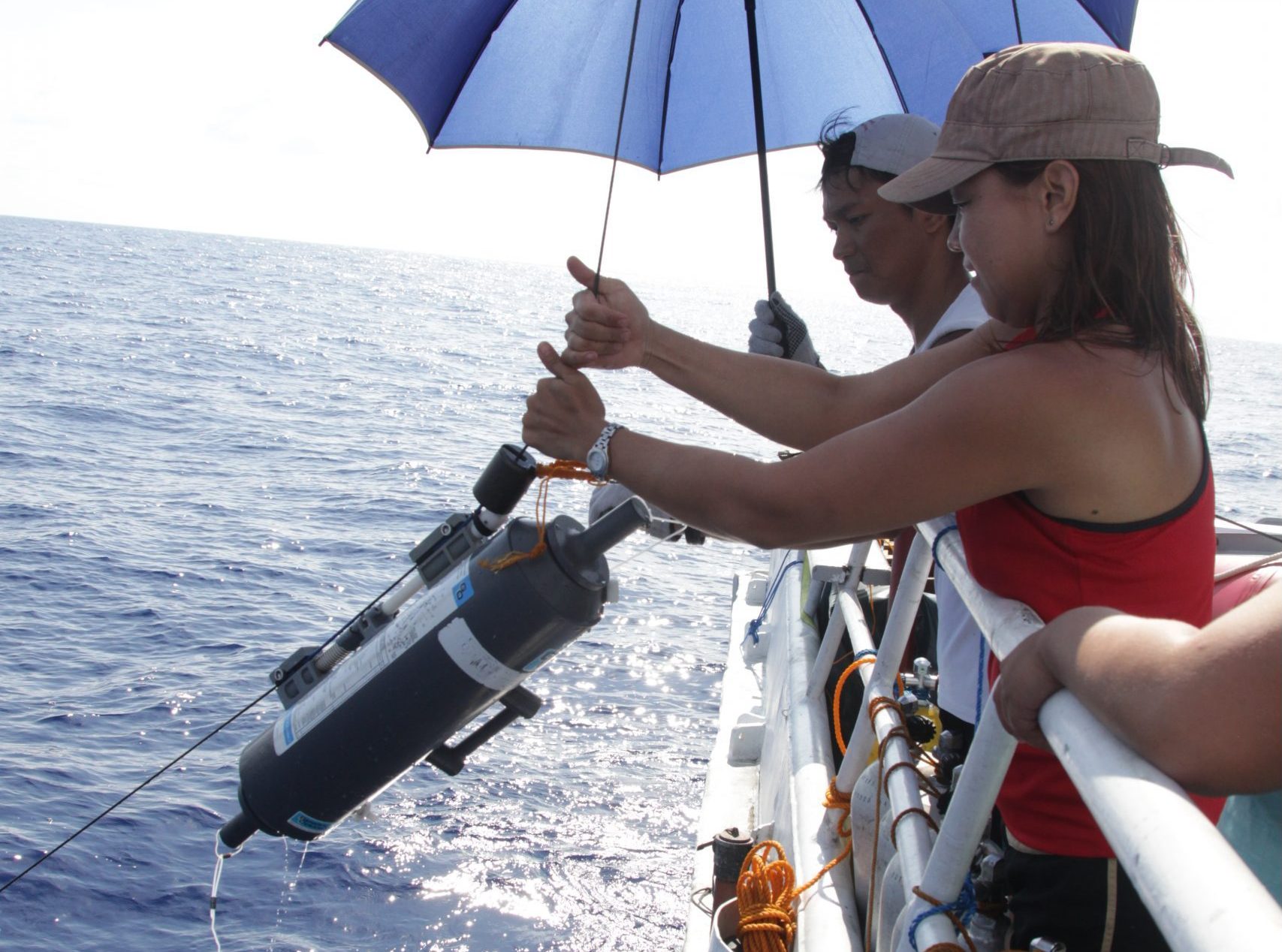
In celebration of UPD’s Science, Technology, and Society (STS) Month, Dr. Bagamasbad and Dr. Yñiguez will be speaking at the online event, “A Woman’s Place is Everywhere: A forum on the multidisciplinary works of UPD-CS’ TOWNS 2022 Awardees.” Free and open to the public, the forum is hosted by the UPD College of Science and is scheduled for October 20, 2022 at 2:30-4pm. Those who are interested to attend may register via https://bit.ly/STSMonth.
For interview requests and additional information, visit https://fb.com/UPDScience or email media@science.upd.edu.ph

